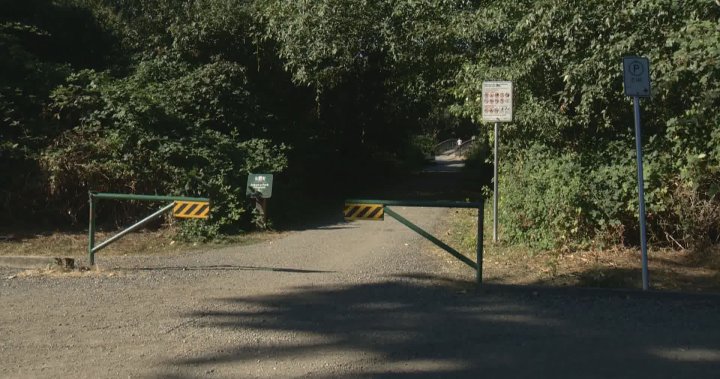I’m a submarine expert – 7 clues Titanic sub’s mangled wreckage will reveal… including dodgy wiring & hidden cracks
A SUBMARINE expert has revealed seven clues the mangled wreckage from the doomed Titanic sub will reveal about the moment disaster struck.
Dr Jasper Graham-Jones told The Sun many factors could be behind the catastrophic failure which claimed the lives of five men earlier this month.
The mangled wreckage of the doomed Titan sub was hauled ashore today after it imploded at the bottom of the Atlantic.
About ten pieces were taken off the ship – including the porthole and a large panel of some sort.
Dr. Graham-Jones, Associate Professor in Mechanical and Marine Engineering at the University of Plymouth, revealed today that miscalculations may have contributed to the disaster.
Faulty window
Citing the viewing window, Graham-Jones explained that it was not certified to go down to 3800 metres, where the wreck of the Titanic lies.


He said: “I think the guy who ran this was actually making big mistakes, and was overconfident in his calculations.
“Cracks would have formed. They might not have been seen at first, but they start to become a little bit bigger each time before becoming a critical crack and failing.”
Electrical catastrophe
Pipes and parts of the vessel that led outside could have begun to leak, and even corroded some of the electronics controlling the submersible.
He said: “This could have been an electrical catastrophe. It could have been corrosion, it could have been a fire.
“Any leakage of water coming through to the electrics could lead to failure as well.
“Some of the pipes and parts that lead outside could have begun to leak. If you have a wire going outside, then those wires going through land could actually start to leak. They could have corroded.”
If there was a very minor leak, the passengers may have been aware of it – though the most likely case was instant implosion, due to the sonic bang heard by ships searching.
The process of discovering a cause for the horrific incident will take a great deal of time as experts comb through the salvaged wreck, but Dr Graham-Jones said the photos released today of the wreckage are identifiable.
The expert said he could see casings for piping – along with the pipes – a “floor structure”, and electrical wiring.
Tiny cracks and where they could be located
Dr Graham-Jones explained following the salvage of the wreck, investigators will begin to look for a cause of disaster in locations where cracks are usually found.
Typically, he said, this could be at joints of the vessel and where the greatest flexing is occurring.
But certain patterns of cracks on the vessel and their locations can signify what exactly went wrong – and when.
Dr Graham-Jones said: “Crack could be brittle, or ductile, and related to fatigue and delamination. By scanning under an electron microscope, you can see the fatigue and confirm the speed and direction of the cracks.”
Tiny grooves along Titan’s surface
Striations in the surface could also could also tell experts how much time was between the first crack’s formation and critical failure of the submarine.
Striations refer to tiny grooves or cracks that run in parallel to each other.
Dr Graham-Jones said: “Once a fatigue crack has initiated, it grows a small amount with each loading cycle, typically producing striations on some parts of fracture surfaces.
“Each striation shows the distance between each stress cycle and time to critical failure.”
Was there excessive heat onboard the sub?
Investigators looking at the mangled metal debris will also search for signs of excessive heating, corrosion and buckling, he said.
Dr Graham-Jones explained: “Has there been excessive heating, or corrosion or buckling? Distortion of joints and fittings?”
But an issue investigators could face is differentiating between problems that were already on the submarine prior to its launch, and defects which formed on the vessel after implosion.
Were there any defects from before sub went down?
Dr Graham-Jones said: “There are three timelines: before the incident, during the incident, and after the incident.”
Despite the confusion which investigators may sort through while looking at the salvaged wreck, the carbon fibre pieces should hold the answer, he said.
He explained any pressure bulkheads, such as the poly-carbonate windows or titanium and carbon fibre sections on the sub could signify the cause of disaster.
Was there any wiring along the pressure bulkhead?
Wires going through the pressure bulkhead hull could also hold the answer to why the craft failed.
Wiring onboard the vessel could have made the sub more susceptible to pressure damage if the wires were already corroded from a leak.
Dr Graham Jones said: “It is critical to make sure they try and collect carefully so that no further damage is caused to collected parts.
“From visual and magnified views, components’ crack paths can be recorded.
“Typically, a map of all these crack paths this can be fixed to a few initial locations. From these initial locations possible failure causes can be suggested.”
The search and rescue operation for Titan – spanning 10,000 square miles – was wound down after debris was found last Thursday.
The US Coast Guard said two debris fields found 1,600ft from the Titanic wreckage, which is 12,500ft beneath the ocean, included the ten-ton Titan’s nose cone and front and back ends of its pressure hull.
A deep-sea robot sub dropped onto the seabed by Horizon Arctic found the debris.


US Coast Guard Rear Admiral John Mauger said the find was “consistent with the catastrophic loss of the pressure chamber”.
The chances of the men’s bodies being discovered are next to none.

















